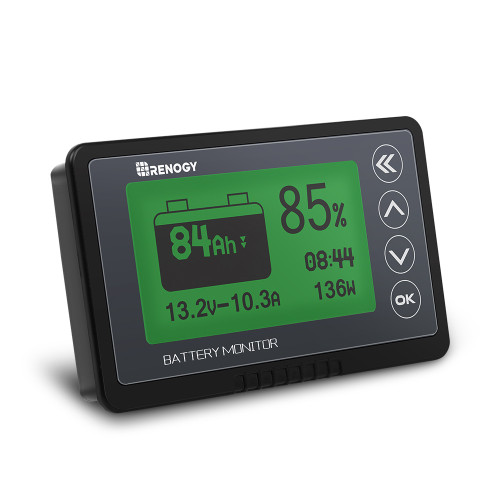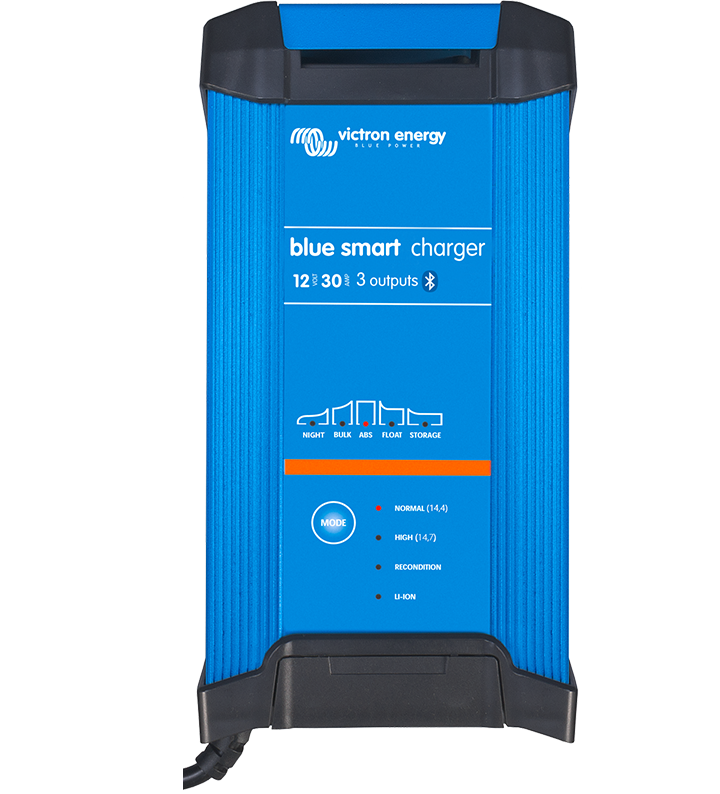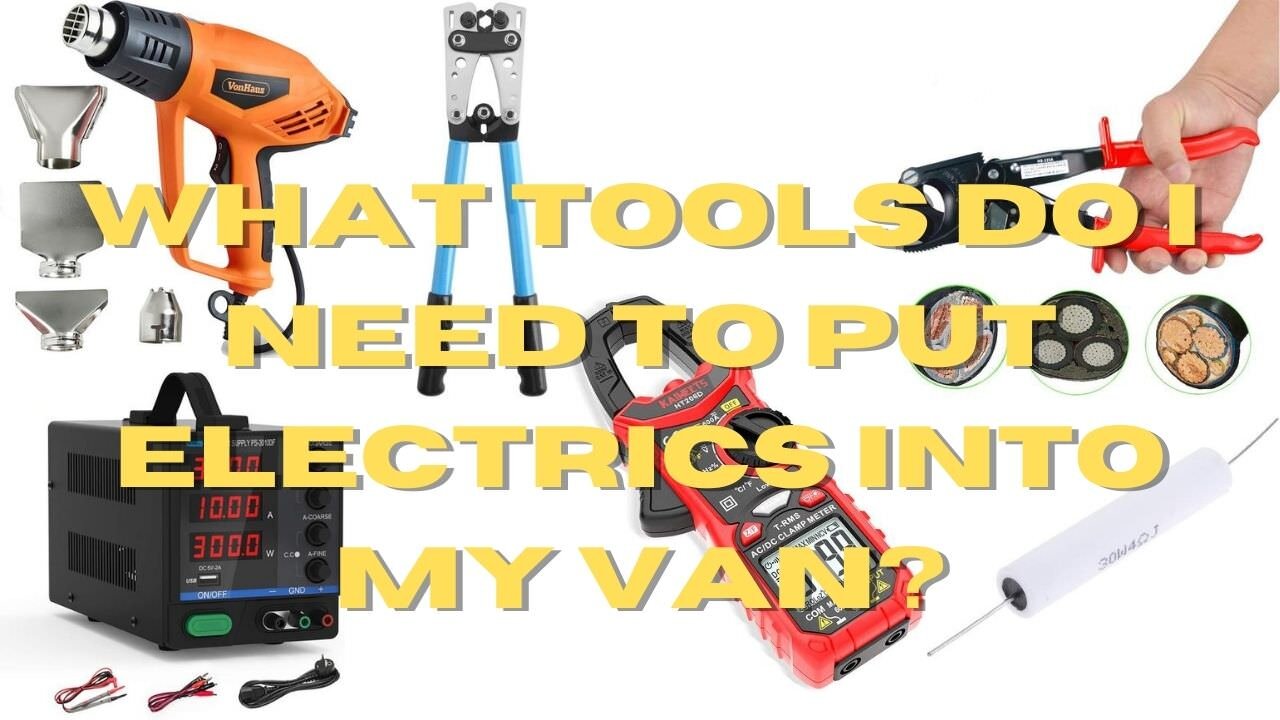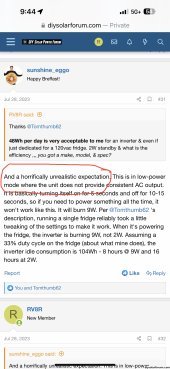I have a T Tocas 50a circuit breaker which I believe goes between the PVs and CC. Do I also need a MIDI type fuse block/fuse? And if so, what size fuse? What size cable from either the fuse or switch to the CC? (24v system)
Does the shore power receptacle connect directly to the inverter (only inverter, not inverter/charger) or do I have to have an AC charger before the inverter?
What size cables should I use from the battery (24v system) to the inverter and converter (12v)? Before it gets to the inverter and converter, will it first connect at a bus bar and the cable size should be?
I'm starting out with one battery but may add another eventually. So what size cable between batteries?
Does the shore power receptacle connect directly to the inverter (only inverter, not inverter/charger) or do I have to have an AC charger before the inverter?
What size cables should I use from the battery (24v system) to the inverter and converter (12v)? Before it gets to the inverter and converter, will it first connect at a bus bar and the cable size should be?
I'm starting out with one battery but may add another eventually. So what size cable between batteries?









